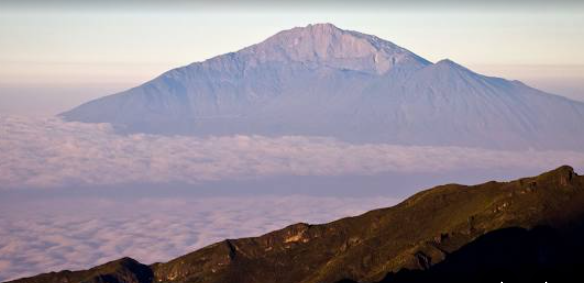provides information about
Accommodation:
At Mt. Meru you are accommodated in multi-bed camps in simple mountain huts. Before and after the climb in a mid-range hotel in Moshi
Catering:
On the trekking days there is an invigorating breakfast (egg, pancakes, fruits, muesli, and sausage at the beginning). At lunchtime there is usually a rich packed lunch with a sandwich, boiled egg, samosa, biscuit and fruit. In the evening there is a starter soup, then often meat and vegetables with pasta or rice. If you want, you can also taste the East African maize porridge ugali, which your escort team prepares for you. Please understand, however, that the food is not overly varied, as all catering must be borne. Drinking water is boiled and filled hot in the bottles or bladders you have brought with you in the morning and in the evening, sometimes also at noon (please bring a capacity of at least 3 liters per person). The boiled water can be drunk without hesitation, no additional water disinfection tablets are necessary. A rich breakfast buffet and dinner are available at the hotel in Moshi. Apart from climbing the mountain, you get drinking water in sealed water bottles (make sure that the seal or the cap is unopened). In the interests of your health, please brush your teeth with the drinking water.
Sustainability:
On this trip, you will be accompanied by people carrying your luggage and other necessary equipment. For these so-called sponsors we have developed the Safaria Porter Policy, which ensures that the working conditions for this profession are humane and fair. We want your porters to be well equipped, to have medical care in the event of illness and to be insured against loss of earnings, that the weight to be carried is limited and that suitable accommodation and adequate meals are provided during the trek.
Useful information:
At 4,565 m, Mt. Meru is the second highest mountain in Tanzania, the fifth highest in Africa and - like Kilimanjaro - a volcano. Originally, Mt Meru was higher than it is today (probably even higher than Kilimanjaro). About 250,000 years ago, there was a huge explosion that blew away the eastern rim of the crater. Masses of mud and lava flowed down the slope forming the landscape around the seven Momella lakes. Further eruptions since that time (the last one in 1879) have raised a high ash cone in the main crater, the inner wall of which is over 1,500 m high. Fumaroles (crevices from which sulfur gases escape) and the sometimes warm water of the crater river show that Mt. Meru is still active.
Travel price
